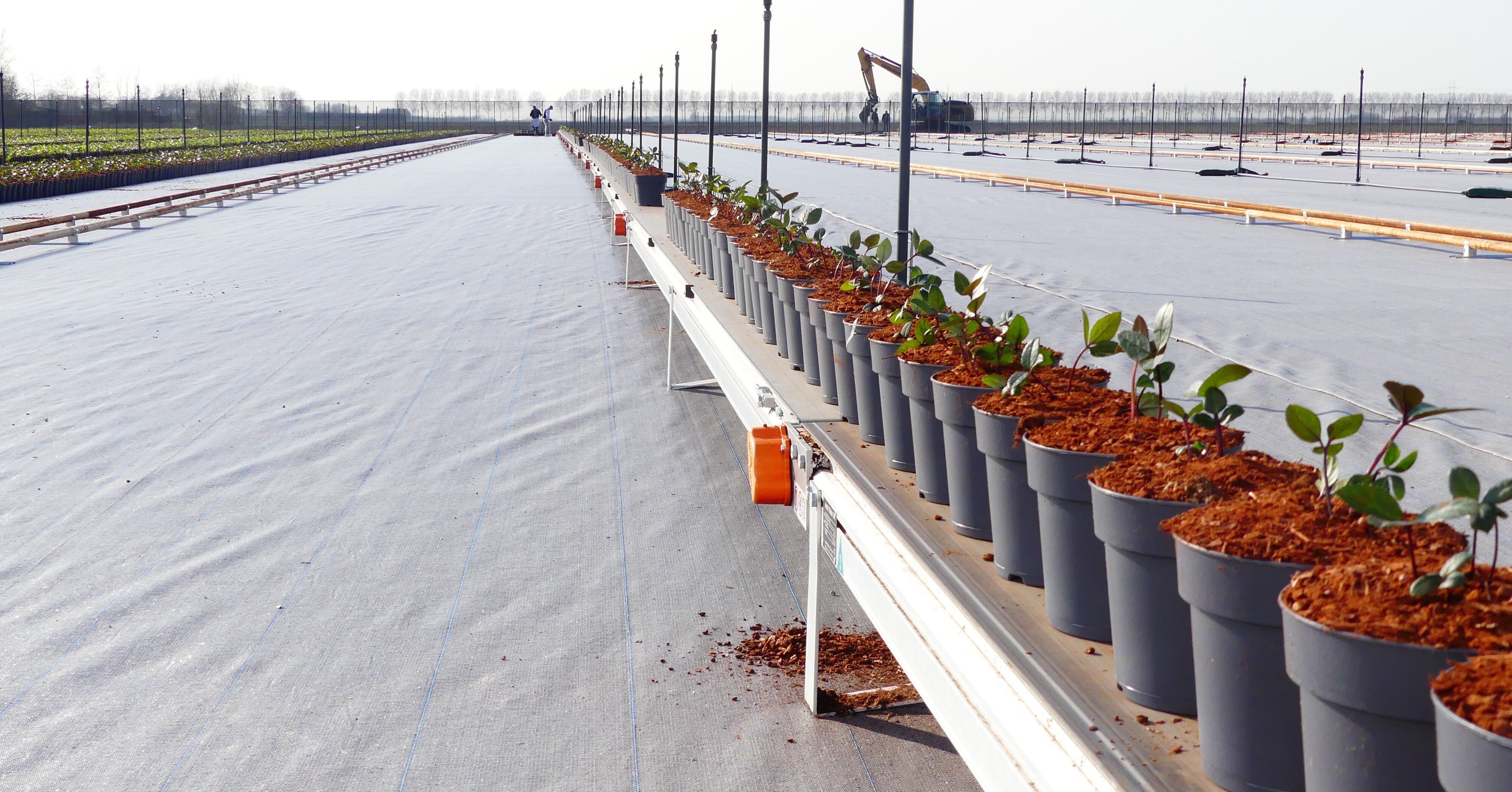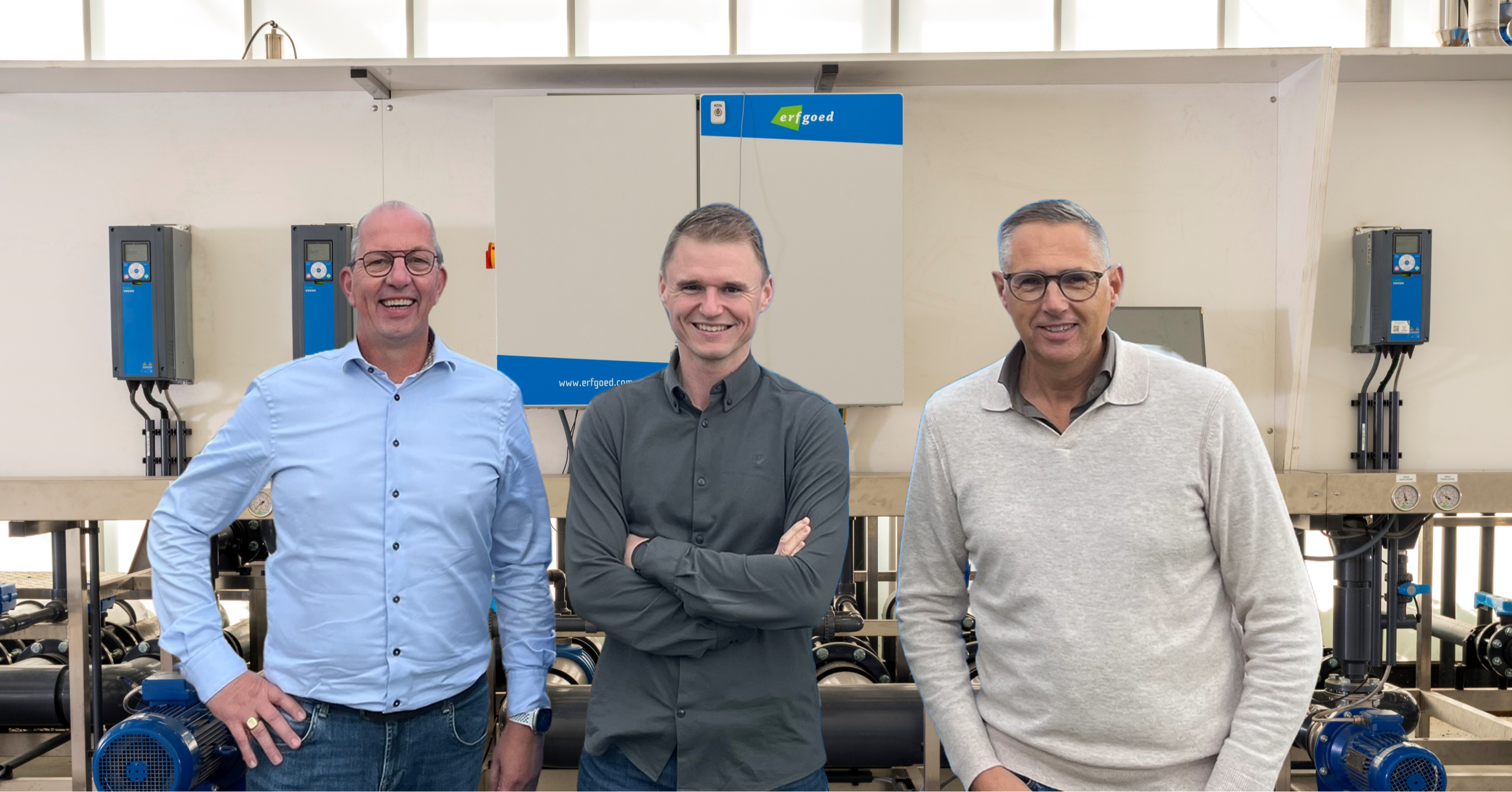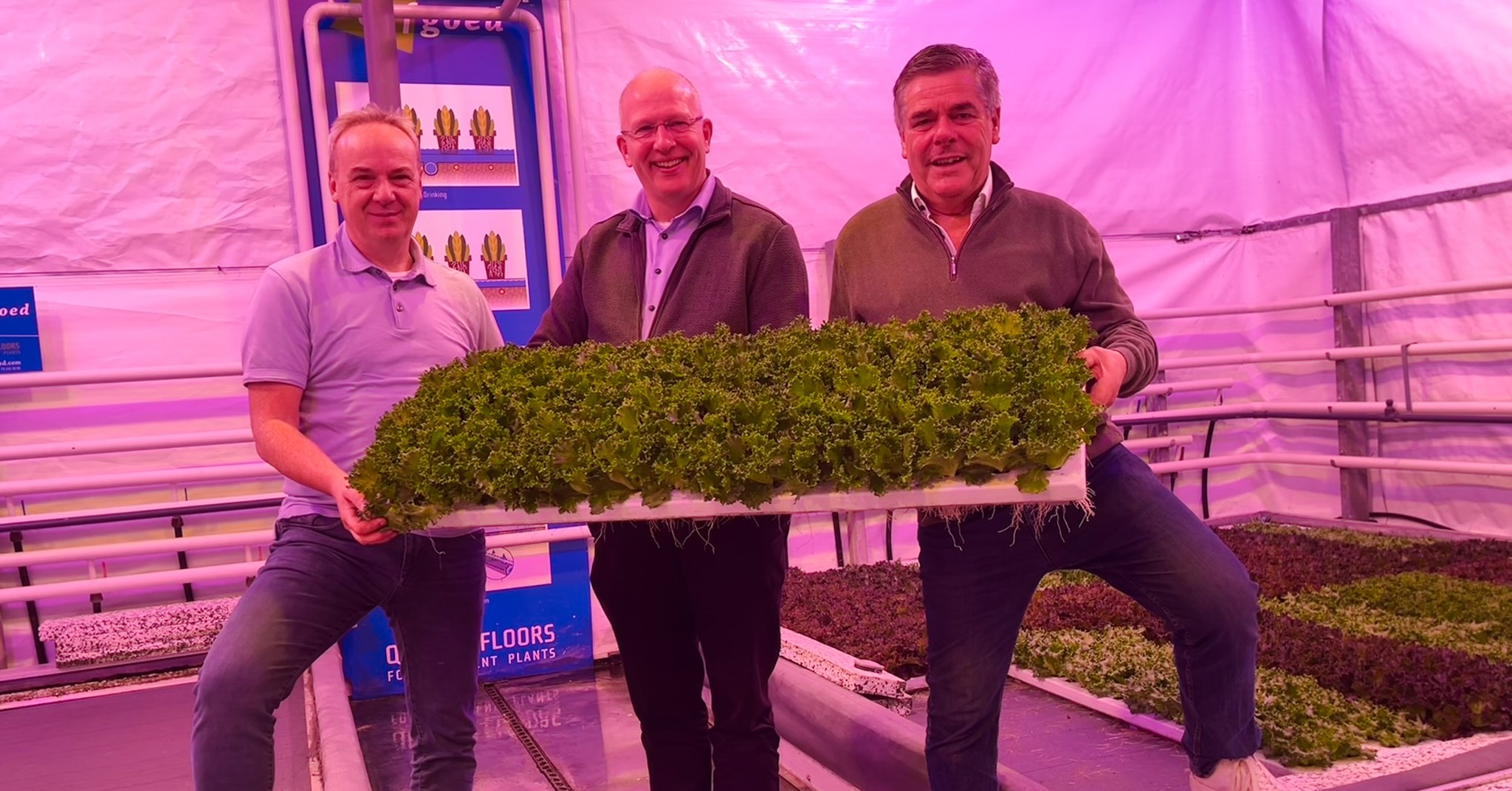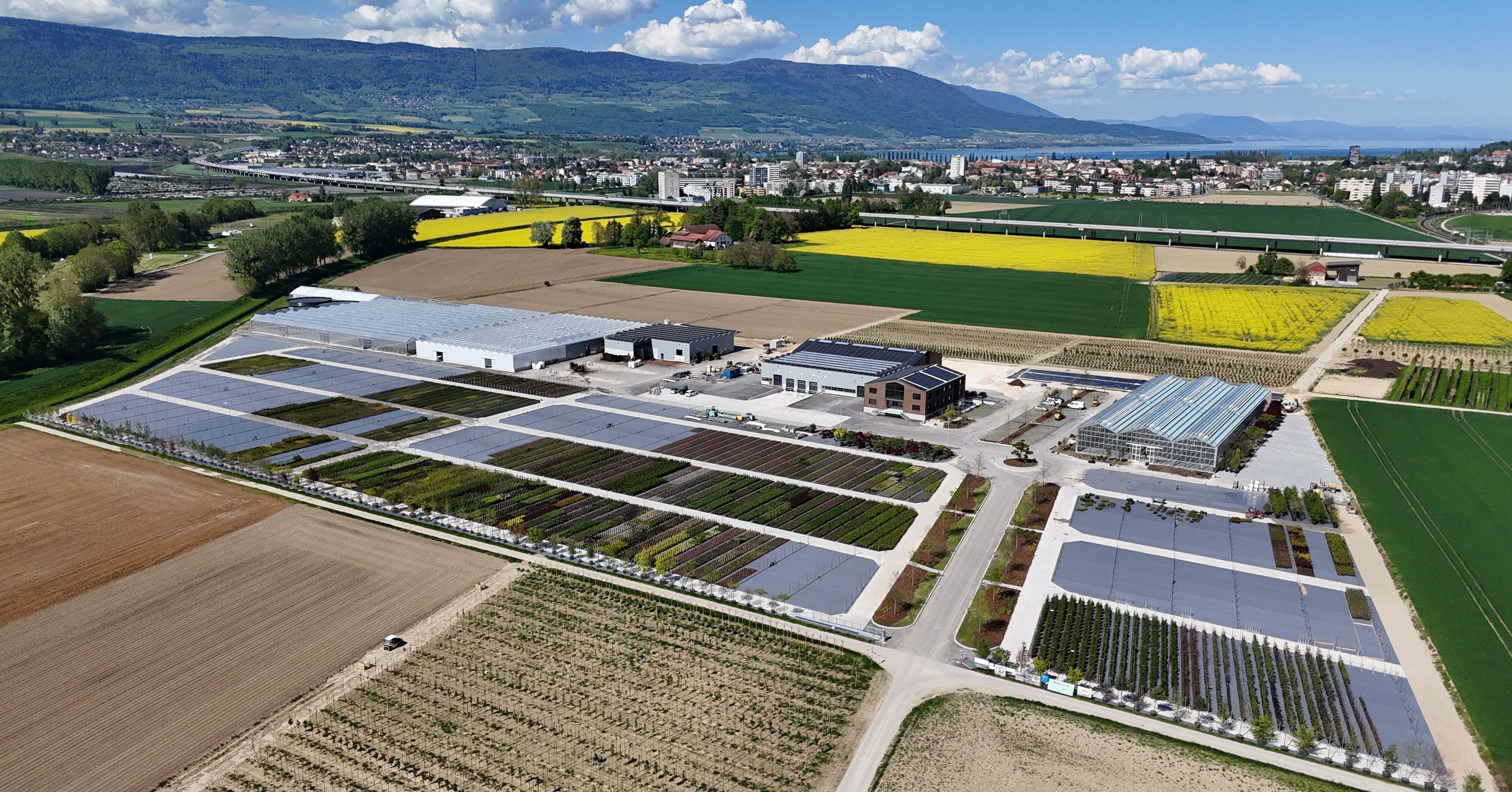- Prefer direct contact? +31 (0)79 593 38 00
- Language: English
Choice of conveyor belt type depends on business and cultivation needs

Choice of conveyor belt type depends on business and cultivation needs
Jun 26, 2024 11:56:00 AM
Labor is becoming increasingly scarce worldwide. Consequently, more growers are opting for automation, investing in either fixed or mobile conveyor belts, often as part of a broader logistical automation solution. According to supplier Martin Stolze, the best option – fixed or mobile – largely depends on the type of cultivation and business conditions. Automation almost always enhances operations, and conveyor belts integrate perfectly with an ErfGoedFloor.
Martin Stolze is a well-established name in the horticultural industry. For decades, the company from De Lier (The Netherlands) has been providing labor-saving solutions for the internal logistical challenges faced by greenhouse growers, particularly those cultivating potted plants.
"When used with an ErfGoedFloor, it mainly involves conveyor belts," says Richard van de Waart, Vice President of International Business at the company. "These belts, available in both mobile and fixed versions, are used to transport plants from point A to point B. They are often part of a comprehensive logistical solution that might include a potting machine, buffer belt, and/or sorter. The belts then serve as the logistical link between these machines and the ErfGoedFloor in the greenhouse."
Grounded in horticulture
Conveyor belt suppliers come in various types and sizes, but what makes Martin Stolze unique? "Primarily the fact that we are literally grounded in horticulture; our roots have always been in this sector," says Van de Waart. "Our conveyor belts are specifically developed for horticulture. Over time, we have further refined them to meet the needs and requirements of the entrepreneurs who use them. This results in proven quality. Our belts are made from robust materials and are highly resistant to greenhouse conditions, ensuring they last well beyond the Return on Investment period."
As mentioned, Martin Stolze's conveyor belts are often part of a more comprehensive logistical solution. "These belts are then linked to, for example, a potting machine or a placement robot. We ensure that the software systems of the various components communicate optimally so everything runs smoothly. We work closely and effectively with the suppliers of these other components and machines."
Perfect match with ErfGoedFloor
The company's conveyor belts are also perfectly compatible with an ErfGoedFloor, says Van de Waart. "This is an excellent match. The conveyor belts are either placed on the floor or attached to the greenhouse legs, which reduces the load on the cultivation floor compared to using, for example, a forklift."
Cor Bremmer, Commercial Director at ErfGoed, emphasizes that an ErfGoedFloor always guarantees uniform growth. "This makes automation more appealing and profitable. Plants can be spaced, picked, etc., simultaneously, making Martin Stolze's conveyor belts and an ErfGoedFloor complement each other very well."
No clear-cur advice
The key question is when it is advisable to choose fixed conveyor belts over mobile ones. Richard van de Waart emphasizes that there is no one-size-fits-all recommendation. "The most suitable type of belt largely depends on the type of cultivation. Fixed belts require a higher investment than mobile ones. The more tasks required or the shorter the turnaround time, the more appealing fixed belts become. On average, they should pay for themselves within three to five years."
The entrepreneur's automation needs also play a role, according to the expert. "Fixed belts offer more possibilities for further automation. Because they remain in one place, other machines and logistical solutions can be linked to them."
Additionally, specific business conditions influence the choice. "Growers in parts of the United States, where hurricanes are a risk, generally prefer mobile, movable belts. Many factors come into play in the final decision-making process."
Plantanova (Mexico) - Customer of Martin Stolze
"In our propagation greenhouses, we hadn't yet implemented logistical automation until we recently invested in mobile conveyors. This allowed us to prepare a number of plants for delivery with only six people, whereas previously, it required 26 employees. Consequently, we saved 20 laborers, which represents a significant gain!"
Trend towards fixed belts
Suppliers note a global trend towards investing in fixed belts. "Labor is becoming scarcer and more expensive worldwide, especially skilled labor," says Van de Waart. "Fixed belts save the most labor and require less skilled workers, as the belts set the pace, reducing the need for supervisors and maintaining a constant work tempo."
Whether a grower combines fixed belts with machines like a potting machine or a transplanting robot depends on labor availability and financial resources. "It's always a matter of customization. We tailor our solutions to the specific business situation and the grower's needs."
However, fixed belts have drawbacks. "They offer less flexibility; to work efficiently, you can't just fill empty spaces randomly. Structured and planned work is essential."
Gradual implementation
Both Van de Waart and Bremmer emphasize that integrating conveyor belts and additional automation into operations takes time. "You can't go from 0 to 100 overnight. Work processes must be adjusted, and employees need to learn how to work with the new systems," says Van de Waart. "Additionally, investing in conveyor belts might face resistance from staff, who may fear job losses."
Experts advise entrepreneurs new to automation to start with mobile belts. "This allows practical experience. Renting belts during peak periods is a low-threshold, cost-effective way to experiment with automation. Transitioning from mobile to fixed belts then becomes easier."
Adapting operations
Van de Waart and Bremmer emphasize that automation also forces entrepreneurs to adapt their operations. "To work efficiently with conveyor belts, you need to be structured," says Bremmer. "This includes creating a logical cultivation plan and carefully considering pot size choices, possibly reducing variations. Such prerequisites are crucial for actual labor savings. Automation thus helps entrepreneurs optimize their operations and elevate them to a higher level."





